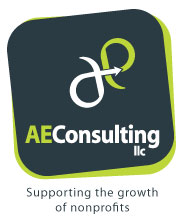In Part 1 of our series we discussed the importance of having an online presence to cater to the increasing number of consumers who are using the Internet to research products and services. We explained that a website is the most common form of online presence and your ideal (and more expensive) option is to invest in a web developer to design and develop your site. If you are on a tight budget and cannot afford a professionally developed website at this time, your next option is to build it yourself.
How to build your own website step-by-step:
1. Obtain a domain name – The domain name is what people type into their address bar to get to your site (www.ae-consulting.net). Picking a domain identical to your company’s name is ideal, but due to limited availability this may not be an option. In this case, find a domain that best reflects what your company offers (Learn more about choosing a domain name).
2. Find a web host – In order for people to access your website, you must have a web host. A web host is a company that leases space on a server where people can publish their websites. There are tons of web hosts out there so do your research to find one that meets your needs (Learn more about finding a good web host).
3. Build your website – The website is what people actually see online. When creating your site you have two options: using a template or starting from scratch. Many web hosts offer website builders where you simply choose a design and fill-in the blanks. You can also purchase templates online. If you plan on building your site from the ground up, you will need to know HTML, the language of web pages (Learn about HTML). Remember to follow basic design principles and web usability strategies to enhance user experience.
4. Managing your content – Your site content includes text, images, and multimedia. Make sure all content has a purpose, whether it is to inform customers about your company or answer any potential questions they may have (Learn about the copywriting process). Also, ensure your content doesn’t contain “too good to be true” words (Learn about copy mistakes). It is also important to keep your site updated with new content so visitors have a reason to check back.
Building your own website takes time and can be an overwhelming process. What do you find to be most intimidating when considering building your own website? This concludes part 2 of our series. Next, we will be discussing your third alternative if hiring a web designer and building your own website is currently not an option for your business.
Tuesday, April 27, 2010
Monday, April 26, 2010
Nonprofits Could Lose Tax Exemption Status
According to the New York Times post on April 23, 2010, an estimated one-fifth to one-quarter of some 1.6 million charities, trade associations, and membership groups will lose their tax exemptions on May 15 at midnight thanks to a provision buried in a 2006 federal bill aimed at pension reform. If you have not filed taxes for three consecutive years, including those with revenue under $25k, you need to contact a tax professional immediately. Please reference the linked article for more information.
Monday, April 19, 2010
Welcome Erin to AE's Team
We'd like to welcome Erin Freehan to AE's team as a level 2 Consultant. She will be working with existing and new clients, has a background in PR and marketing, and has extensive experience with nonprofits. As our client base continues to grow, it is important for us to ensure we're offering quality services to each client, thus a new consultant was needed! Welcome Erin! We look forward to your contributions to our team and client projects.
Tuesday, April 13, 2010
Free Webinar for Nonprofits: Finding the Perfect Donor Database in an Imperfect World
Tune in to this free webinar for nonprofits on April 15th at 11 a.m. Pacific time. The webinar will cover how to choose a donor database, focusing on the following topics:
1. What to expect from a fundraising database.
2. When to consider a change.
3. How to make the decision.
4. Why not build your own database?
Having a database is essential to tracking critical organization information such as donor, volunteer, and supporter info. The challenge is ensuring your staff is using it consistently and correctly.
Particularly, we like the part about building your own database. Why? Because your very own database can be customized to meet your current needs and is flexible if these needs change in the future.
Contact your AE Consultant for tips on how to get the team on board!
1. What to expect from a fundraising database.
2. When to consider a change.
3. How to make the decision.
4. Why not build your own database?
Having a database is essential to tracking critical organization information such as donor, volunteer, and supporter info. The challenge is ensuring your staff is using it consistently and correctly.
Particularly, we like the part about building your own database. Why? Because your very own database can be customized to meet your current needs and is flexible if these needs change in the future.
Contact your AE Consultant for tips on how to get the team on board!
Subscribe to:
Comments (Atom)




